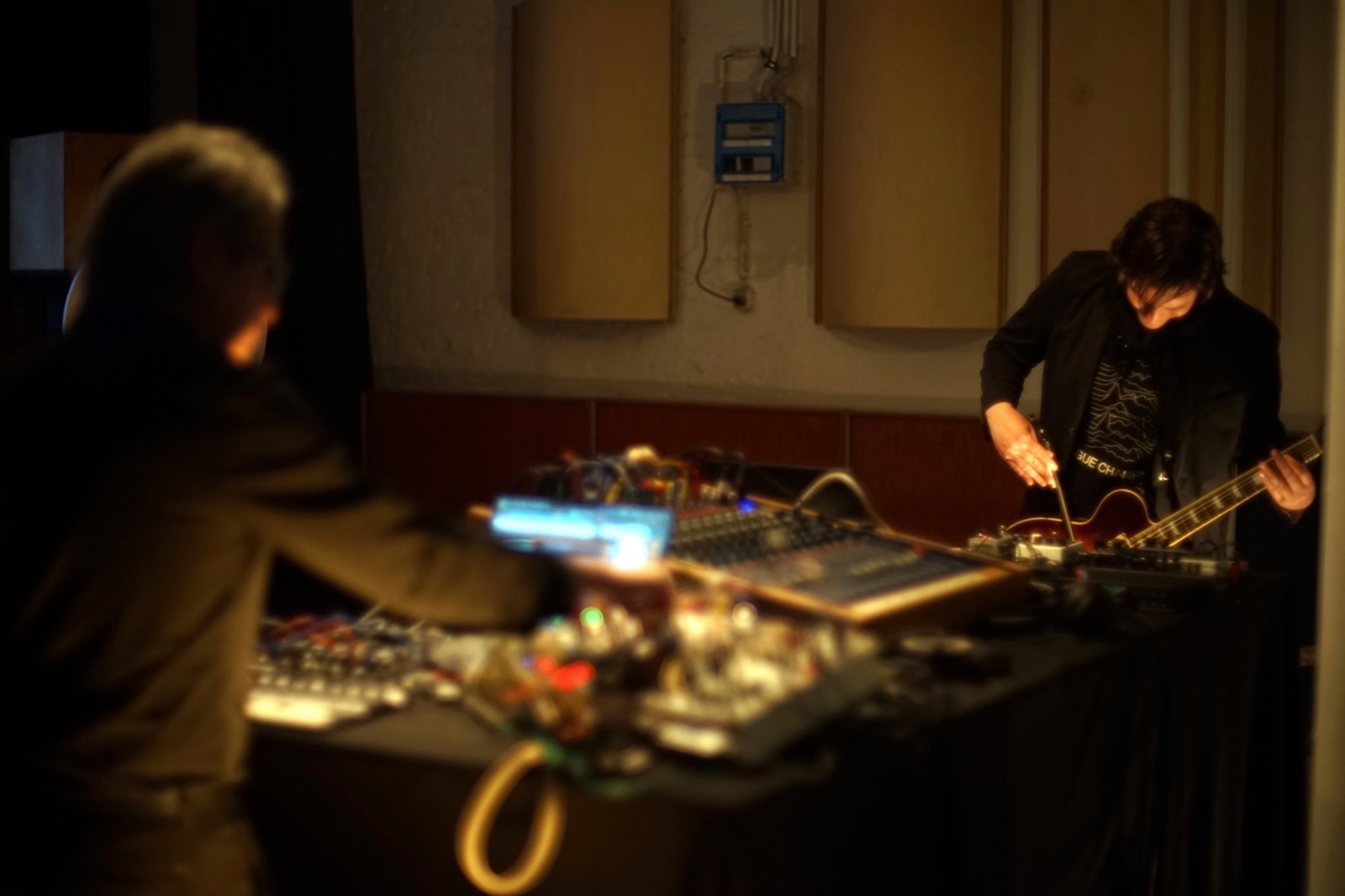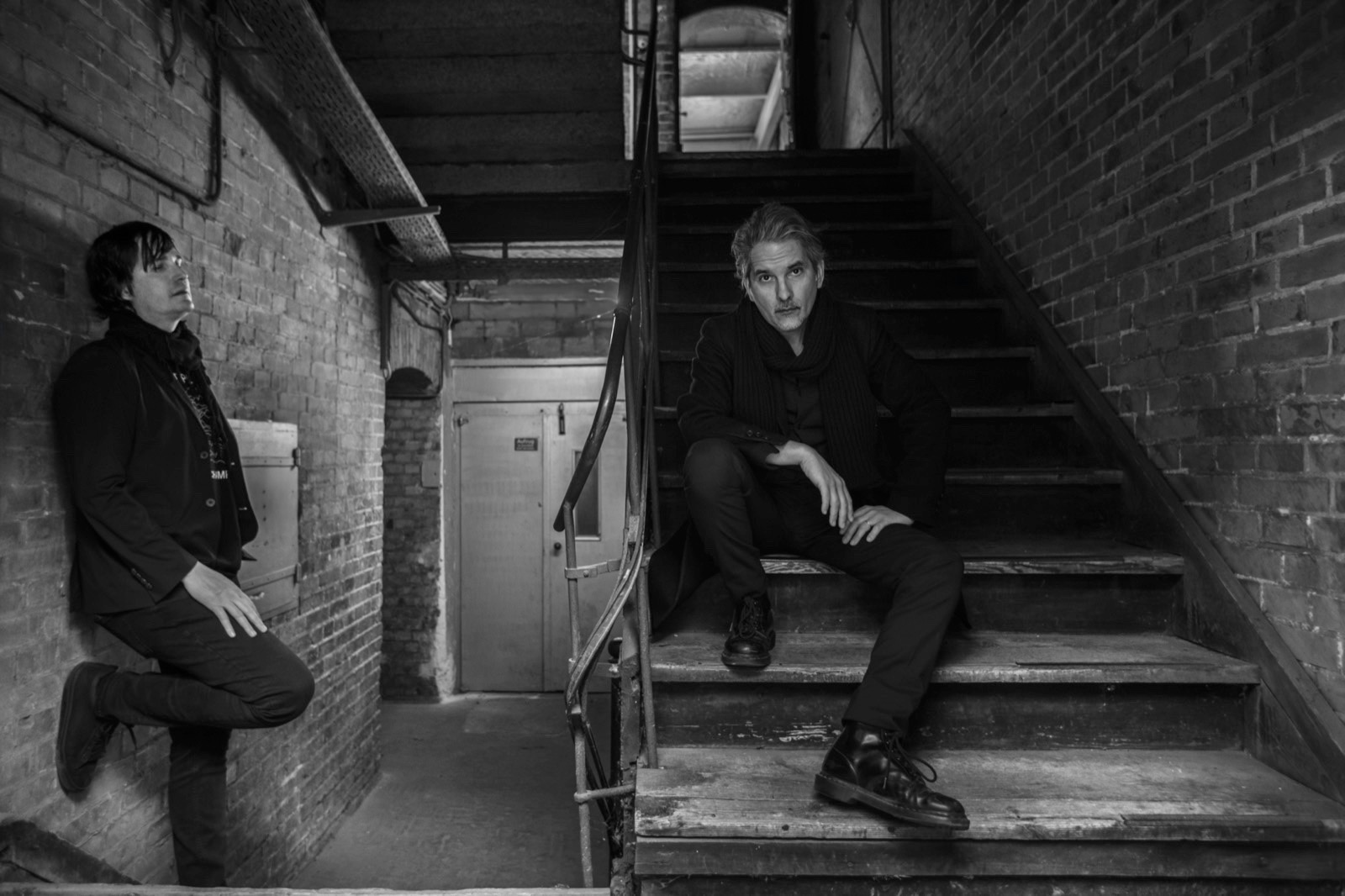Their creative partnership emerged unexpectedly during a live performance.
“After our solo sets in Madrid in 2023, we were invited to do an encore together,” Irisarri recalls. “We had never played as a duo, but there was an immediate connection. It wasn’t planned. It just worked.”
“It was an intuitive moment,” says Mogard. “We discovered how naturally our sounds spoke to each other, even though our approaches are quite different.”
The development of the album was less about a single idea and more about the interplay between layers.
“It’s not about one sound or motif,” Mogard explains. “It’s about how our individual elements respond to and enrich one another. That relationship creates the depth and movement.”
Both artists rely heavily on instinct in their creative processes, favoring spontaneity over rigid structure.
“I tend to work intuitively in the studio,” says Mogard. “I might choose a familiar instrument because I know how it behaves, but I try not to impose an outcome. Often the process leads somewhere I didn’t expect.”
Irisarri takes a similar approach. “I don’t come into the studio with a strict plan. I trust the sound to guide me. That openness allows unexpected moments to emerge, and those are usually the most powerful.”
In performance, their music takes on new dimensions. For Irisarri, the live setting introduces spontaneity and a different kind of energy.
“Live shows are flexible,” he says. “Even though the material might be familiar, I adapt it depending on the space, the acoustics, the atmosphere in the room. That unpredictability keeps it alive.”
Mogard adds that improvisation plays a key role. “We work within a framework, but every performance is unique. Some sections are completely improvised, which makes each show different.”
He recalls a particularly memorable performance at Le Guess Who? festival. “We played in a church, and the acoustics transformed everything. Long reverberations wrapped around every sound. Even the wooden structure of the building contributed, vibrating subtly with the bass frequencies. It became part of the composition.”
Impossibly Distant, Impossibly Close does not follow a narrative, nor does it aim for resolution. Instead, it offers a space — one that invites listening rather than demands it.
This is music for reflection. It is generous with silence. It respects ambiguity. In its quietude, it offers a different kind of presence.
In a time that often values speed, clarity, and immediate payoff, the work of Abul Mogard and Rafael Anton Irisarri offers something else entirely: depth, patience, and resonance that lingers long after the sound has faded.
As Irisarri puts it, “Sometimes the music that seems the farthest away is the one that brings you closest to yourself.”
In Impossibly Distant, Impossibly Close, Mogard and Irisarri are not offering answers. They are offering conditions for reflection, for disorientation, for stillness. This is music that doesn’t impose meaning but reveals it slowly, asking only that the listener remain present. At a time when attention is fragmented and everything demands immediate reaction, this album chooses patience, subtlety, and trust in the listener’s imagination.
It reminds us that intimacy can exist across great distances, and that silence, when treated with care, can speak volumes.
 https://www.nastymagazine.com/wp-content/uploads/2025/01/Screenshot-2025-01-14-at-18.08.01.png
1590
1182
Editor Nasty
https://www.nastymagazine.com/wp-content/uploads/2015/02/new-logo-basker-WHITE4.png
Editor Nasty2025-01-15 12:04:382025-03-19 13:23:12A Collision of Souls / Gabriele Tinti & Abel Ferrara
https://www.nastymagazine.com/wp-content/uploads/2025/01/Screenshot-2025-01-14-at-18.08.01.png
1590
1182
Editor Nasty
https://www.nastymagazine.com/wp-content/uploads/2015/02/new-logo-basker-WHITE4.png
Editor Nasty2025-01-15 12:04:382025-03-19 13:23:12A Collision of Souls / Gabriele Tinti & Abel Ferrara





